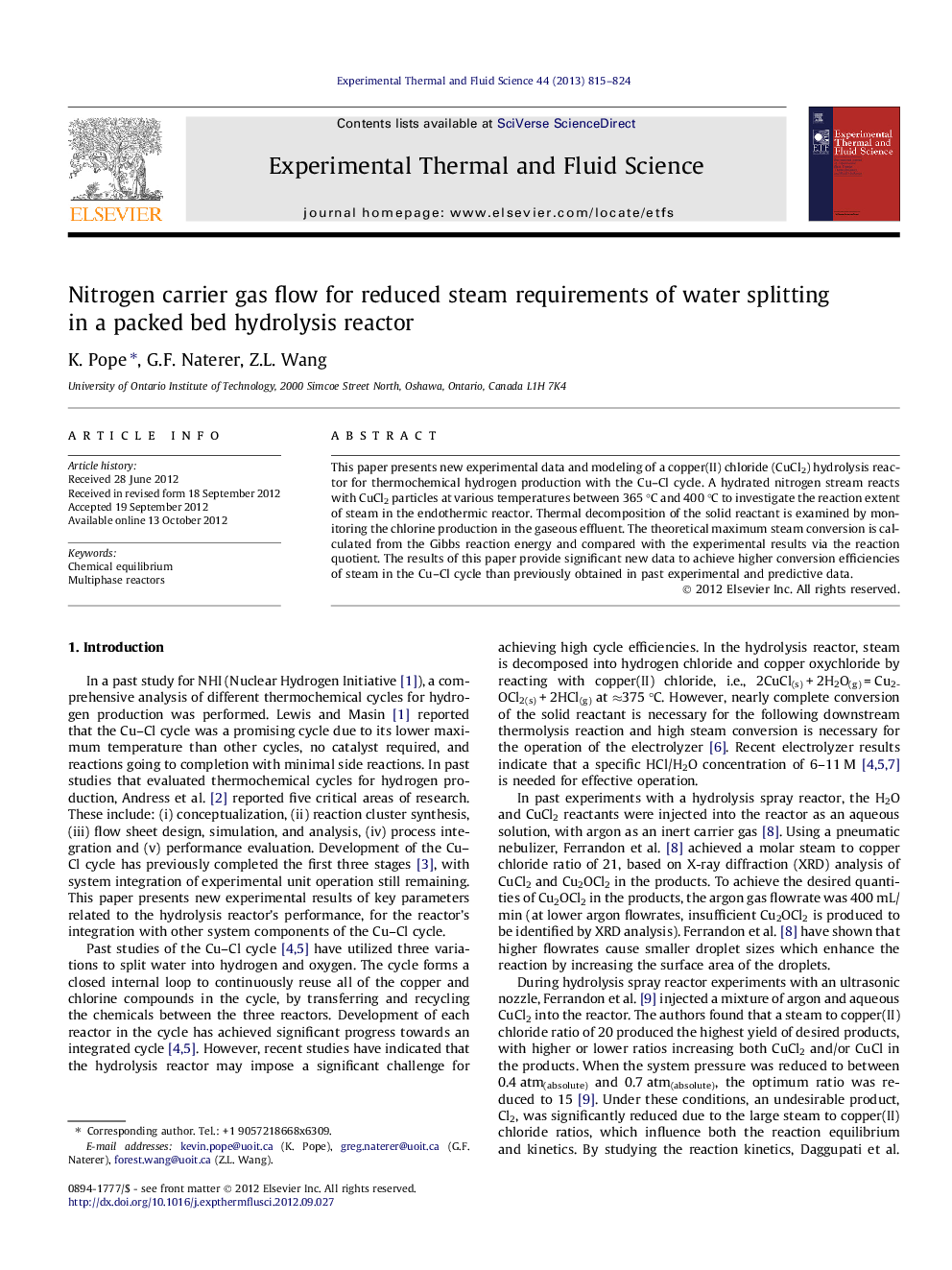| Article ID | Journal | Published Year | Pages | File Type |
|---|---|---|---|---|
| 651572 | Experimental Thermal and Fluid Science | 2013 | 10 Pages |
This paper presents new experimental data and modeling of a copper(II) chloride (CuCl2) hydrolysis reactor for thermochemical hydrogen production with the Cu–Cl cycle. A hydrated nitrogen stream reacts with CuCl2 particles at various temperatures between 365 °C and 400 °C to investigate the reaction extent of steam in the endothermic reactor. Thermal decomposition of the solid reactant is examined by monitoring the chlorine production in the gaseous effluent. The theoretical maximum steam conversion is calculated from the Gibbs reaction energy and compared with the experimental results via the reaction quotient. The results of this paper provide significant new data to achieve higher conversion efficiencies of steam in the Cu–Cl cycle than previously obtained in past experimental and predictive data.
► This paper presents new experimental data and modeling of a CuCl2 hydrolysis reactor. ► A much lower steam requirement for CuCl2 hydrolysis was achieved ascompared to prior studies. ► The new advances eliminate the energy intensive process of separatingHCl gas and steam.
